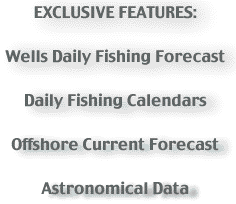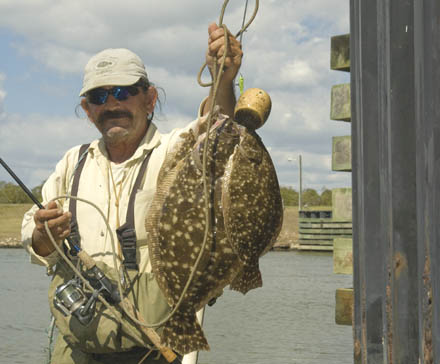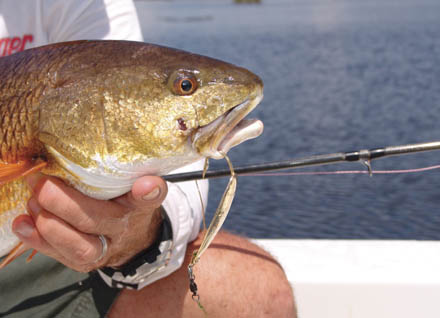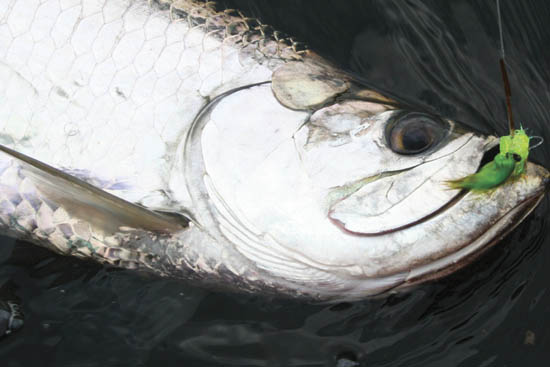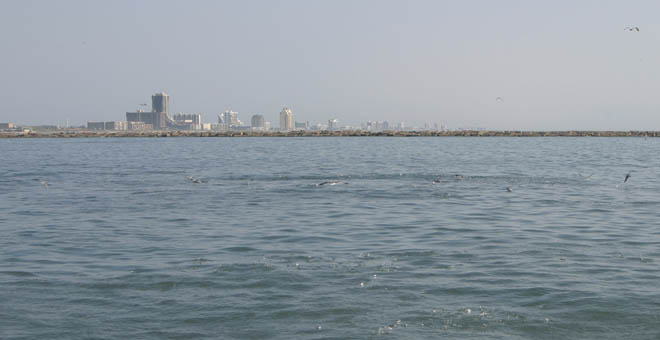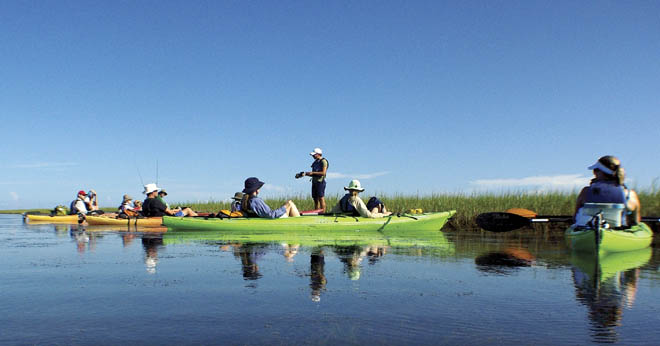
The Saltwater Magazine for Gulf Coast Fishing!
FISHING FORECASTS
| FISHING CALENDARS | ARTICLES | SUBSCRIBE
FALL 2011 Preview
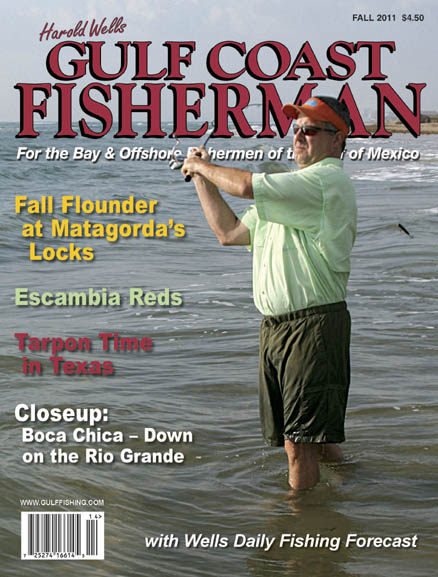
|
Ronny Stilwell works his fishing rod for flounder with finesse, like Minnesota Fats used to work a pool cue. Stilwell is sensitive to even the slightest vibration generated by his two five-inch soft plastic lures. He is king of the Matagorda Lock fishermen. Not that there is a formal organization, but Stilwell gets to the south side of the East Matagorda Lock well before sunrise, and well before anyone else; he fishes nearly every day, and he consistently catches flounder. The Matagorda Locks are located at the confluence of the Colorado River and the Intracoastal Waterway (ICW) in the town of Matagorda, Texas. Every fall, flounder follow the ebbing tides to guide them
on their journey offshore. When they reach their destination, the larger
females release their eggs and the smaller males fertilize the eggs. Having
fulfilled their instinctive duties the mature flounder follow the flooding
tides back into the bays in the spring, usually February through April.
Their tiny offspring enter the estuaries in late winter or early spring,
where they feed and grow... ESCAMBIA REDS by David Brown Days are growing shorter and nights are getting cooler, but inshore anglers are finding "red" hot action throughout the Escambia Bay region. Indeed, the ever-gluttonous redfish cranks up its feeding priority in preparation for winter's approaching leanness. The Bay hosts the heavyweight reds earlier in the year, but by the time autumn reaches the Florida Panhandle, these bulls will have made their offshore spawning migration. Redfish remaining in the bay will be at or below the maximum slot length of 27 inches. These fish will perk up during early fall, taking seasonal cues from their environment. According to local guide, Capt. Wes Rozier, 65-70 degrees is the ideal range for bay fishing. Below 65 will chill the scene to lethargic levels, so the rate at which fall advances determines the length and intensity of the year-end redfish bonanza. "The redfish will stay right in their summer pattern as long as
the food remains available and until that water temperature plummets,"
he said. "When that water drops below 65 degrees, that's their first
cue to start falling off into the deep holes because they know that winter
is on its way.
TARPON TIME
by Capt. Robert Sloan
What was quiet is now chaos. A 7-foot long silver hulk of TNT explodes from the water, cart 'wheeling head over tail 10 feet from my face. No doubt about this one definitely one heck of a tarpon in the 180 to 200 pound class. It's my lucky day. Or is it? This silver king is huge. On stand up tackle it's a battle between fish and angler. If the fisherman is lucky, the tarpon's spirit is broken quickly. If you're not, you'll soon understand why the angling fraternity worldwide calls this, "The King." In its element, a smart tarpon rules. The deck is stacked in the fish's favor. In a long battle the angler will have to fight through a fog of fatigue, and in the end feel like you've been dragged down 10 miles of bad road. With this particular tarpon I was fishing out of Venice La., the home of world class silver king angling adventures. And yes, even after the oil disaster last year, the tarpon are back in big time numbers. In fact, while running a boat there during the oil cleanup it wasn't unusual for us to see schools of tarpon on the surface no more than a few miles off the mouth of the Mississippi River...
Gulf Coast Closeup - by Capt. Danno Wise
The Rio Grande River has been a fabled part of South Texas as long as people have inhabited the area. Alternately called the Rio Bravo, it is the fourth longest river in the United States and meanders its way some 1,900 miles through Texas and New Mexico before reaching the Gulf of Mexico just east of Brownsville, Texas. Between this confluence of river and Gulf waters and the Brazos Santiago Pass some dozen miles north lies Texas' southernmost stretch of sand - Boca Chica Beach. This remote beach is one of the best places in the United States to pursue surf-run redfish, speckled trout, snook, tarpon and more. Quite often, anglers are able to pursue these fish without seeing so much as another angler. Though the Rio Grande has been in the collective consciousness of the American public through fables, fact and folklore, its reputation as an angling destination is much shorter-lived. The potential of the Rio Bravo was first outlined to America's angling public by Brownsville outdoor writer Hart Stillwell through the pages of Field & Stream. In 1952, while describing a day of fishing on the Rio Grande, Stillwell wrote that "hundreds of tarpon were constantly lunging and flashing and blasting the surface."
Paddling Out - The Art of Artist Boat...
|


